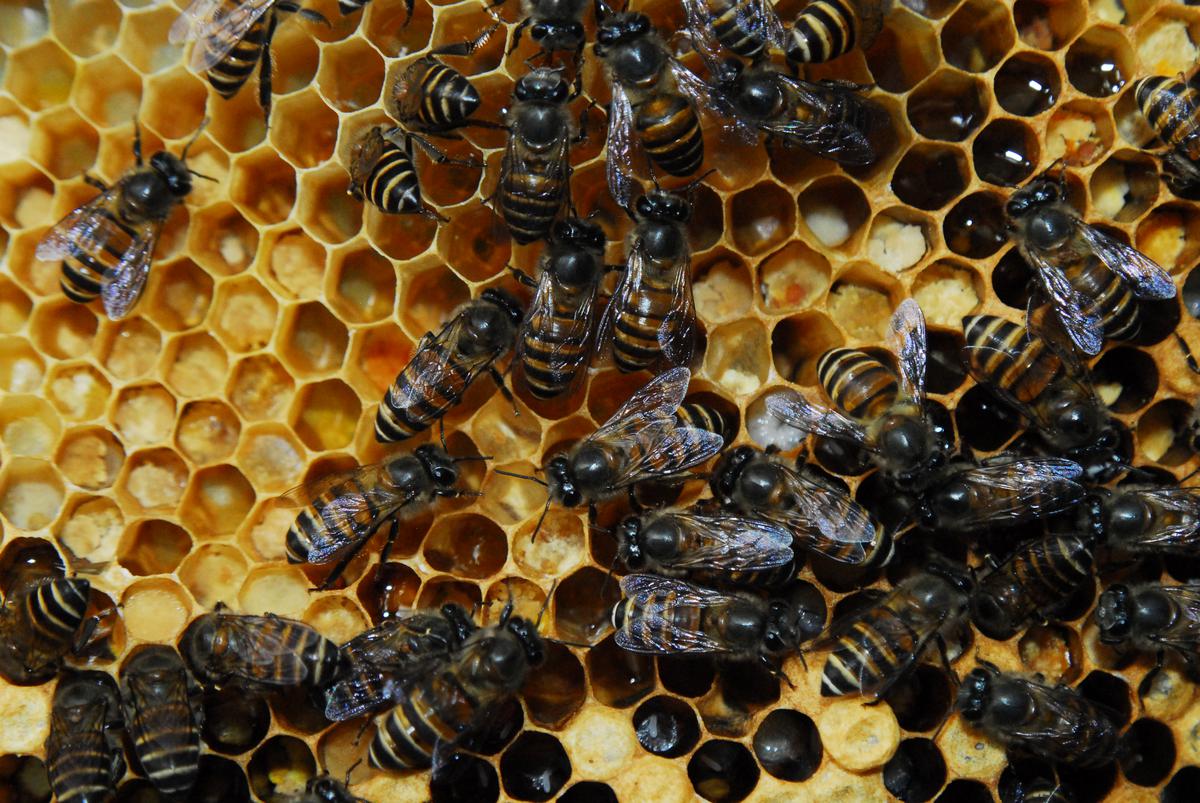


A new species of endemic honeybee has been discovered in the Western Ghats. The new species has been named Apis karinjodian and given the common name Indian black honeybee. The finding has been published in the September issue of the journal Entomon, a peer-reviewed journal brought out by the Association for Advancement of Entomology. The research team behind the discovery comprised Shanas S. from Kerala Agricultural University’s Integrated Farming Systems Research Station, Karamana, here; Anju Krishnan G., a PhD research scholar from the Zoology department of SN College, Cherthala (affiliated to the University of Kerala); and Mashhoor K. from the EMEA College of Arts and Science, Malappuram.
A new species of honeybee has been spotted from the Western Ghats after a gap of more than 200 years. The last honeybee described from India was Apis indica in 1798 by Fabricius. Although Fabricius named the Indian bee Apis indica, it was not considered a valid species till now. The research team restored the status of Apis indica based on a new measure for species discrimination in honeybees termed ‘Radio- Medial Index (RMI).
They obtained high resolution photographs of the type specimen from the Natural History Museum, Copenhagen, Denmark, to prove the distinct identity of Apis indica, which led to the discovery of the Apis karinjodian. Apis karinjodian has evolved from Apis cerana morphotypes that got acclimatised to the hot and humid environment of the Western Ghats.
Molecular analysis of mitochondrial DNA was also carried out and molecular sequence data available in the public open database NCBI-GenBank also helped confirm the species status of the new honeybee. The research work took more than three years. The distribution of Apis karinjodian ranges from the central Western Ghats and Nilgiris to the southern Western Ghats, covering the States of Goa, Karnataka, Kerala and parts of Tamil Nadu. The species has been classified as near threatened (NT) in the State based on the IUCN Red List Categories and Criteria. Till date, only a single species, Apis cerana was noted across the plains of central and southern India and Sri Lanka as a ‘fairly uniform population’ in the Indian subcontinent.
The research has given a new direction to apiculture in the country by proving that it has three species of cavity nesting honey bees viz., Apis indica, Apis cerana, and Apis karinjodian, the last being visibly dark in appearance. The ability of the Indian black honeybee to produce higher quantities of honey, which is thicker in consistency, opens up new avenues for increasing honey production. The new find has increased the species of honeybees in the world to 11.